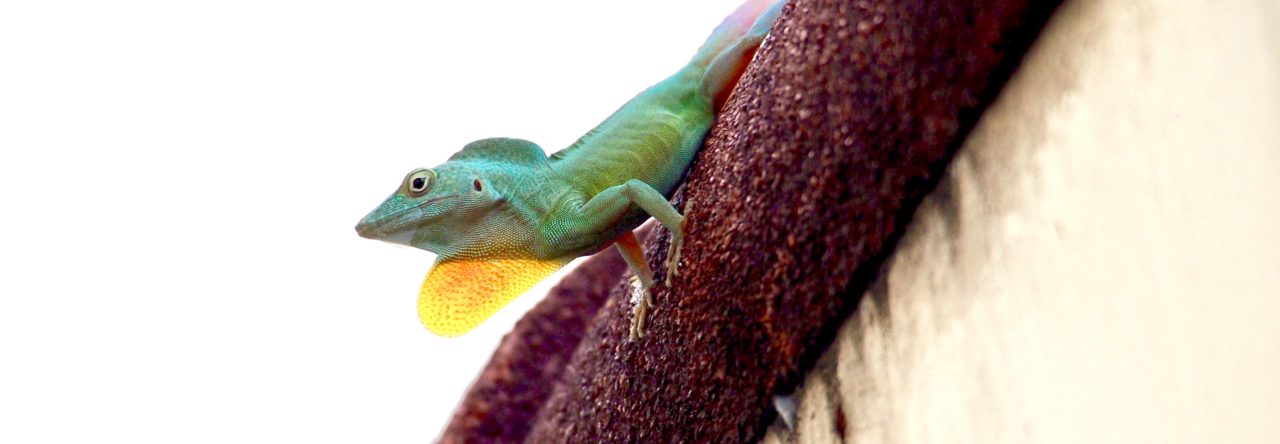We’ve had reports of red-headed and orange-headed A. sagrei previously, but here are some new records. Bob Thomas, Director of the Center for Environmental Communication at Loyola University in New Orleans, sent along photos of red heads from both New Orleans (above) and Mississippi (below). If you click on the links to the previous posts, you’ll see that these have been reported far and wide, but we have no idea whether there is any adaptive significance to this stylish look.
Latest posts by Jonathan Losos (see all)
- Evolution in Real Time on Lizard Island - March 23, 2025
- Spider Snags Adult Anolis osa - March 22, 2025
- An Homage to the Green Anoles of New Orleans - March 21, 2025




Sandra D. Buckner
It was the amazing variety in colour and patterns in Anolis sagrei in my garden (New Providence, The Bahamas) that resulted in my becoming a ‘herpetologist’. Particularly at this time of year (August) and during the wet weather the garden is teeming with juvenile Anolis sagrei in a myriad of patterns with distinct “red-heads” mixed in among them. This poorly focused photo was taken in my garden back in about 1990 before I was serious enough to date my photographs.
shirley muhleisen
I saw a red head anole in my garden this week. I live in Marrero , Louisiana south of New Orleans toward the Gulf of Mexico. I have many in my yard: green Cuban, others with beautiful patterns, and at night I’ve seen some almost transparent (probably not anoles)
Pete Zani
So I’ve been identifying Anolis sagrei in the Yucatan Peninsula. Red heads occur there fairly regularly at about 5-10% of the population. Not AS red as pictured in this post, but [here’s](https://www.inaturalist.org/observations/38814451) an example.